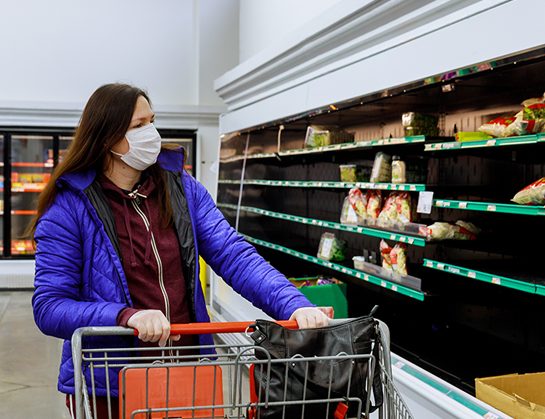The world is growing anxious as COVID-19 has long overstayed its welcome. The virus has managed to disrupt society in virtually every way possible with increased social distancing practices, school and store closures, and shortages in essential products. Among the major societal effects of the virus is a global food shortage and, subsequently, increased food insecurity.
Food Shortage:
In trying to contain and slow the spread of COVID-19, borders have been closed and travel bans put in place. As an added precaution, food export bans have been enacted across the world, with 14 countries placing bans for approximately 20 different products, as far back as April 24, 2020. The impacts of these lockdowns are widespread, from slowing harvests in some parts of the world, leaving millions of seasonal workers without livelihoods, to constraining transport of food to markets. Additionally, meat processing plants and food markets are being forced to close in many locations due to serious COVID-19 outbreaks among workers.
As of June 26, 2020, 50+ meatpacking plants in the U.S. have closed or have been forced to operate at limited capacity. Farmers have been burying perishable produce or dumping milk as a result of supply chain disruption and falling consumer demand. As a result, many people in urban areas are struggling to access fresh fruits and vegetables, dairy, meat, and fish. And projected shortages have contributed to panic buying through the masses as people rush local grocery stores and clear the shelves.
Food Insecurity:
Those experiencing food insecurity even before the pandemic are now faced with even greater challenges and stress. Recent statistics reveal that the current population of individuals facing food insecurity is over 37 million (11.5%), with 11 million of those being children. The number of food-insecure individuals within the US can only be expected to rise as the unemployment crisis continues to rise due to the ongoing pandemic.
Food Services/Programs:
Despite the need for food service programs rising as more people face food insecurity, shelters and food programs are faced with greater complications due to the pandemic and social distancing protocols. Many food service centers have altered procedures to boost sanitation efforts and accommodate CDC guidelines. However, many food centers have been forced to close their doors due to food and funding shortages. In New York City alone, nearly 40 percent of its food pantries and soup banks have had to shut down. In the midst of impending closures, local food services have requested that people who are food secure, provide cash donations to their local organizations, and refrain from panic buying/clearing the shelves at markets.
From food shortages to increased food insecurity on both a national and global level, the need to rally together and support those facing the greater effects of the pandemic is essential. However, the first step in assisting those facing increased food insecurities during the pandemic is to call attention to their situation. With the infected receiving the majority of attention during the pandemic, community health leaders must take extra precautions to assist those outside the direct effects of COVID-19.
To learn how ClientTrack by Eccovia can help communities manage the individuals in their community experiencing food insecurity, click here.
Sources:
https://www.feedingamerica.org
https://www.worldbank.org/en/topic/agriculture/brief/food-security-and-covid-19
https://www.csis.org/programs/global-food-security-program/covid-19-and-food-security
https://www.weforum.org/agenda/2020/05/global-food-chains-disruption-covid19/
https://www.meatpoultry.com/articles/22993-covid-19-meat-plant-map



